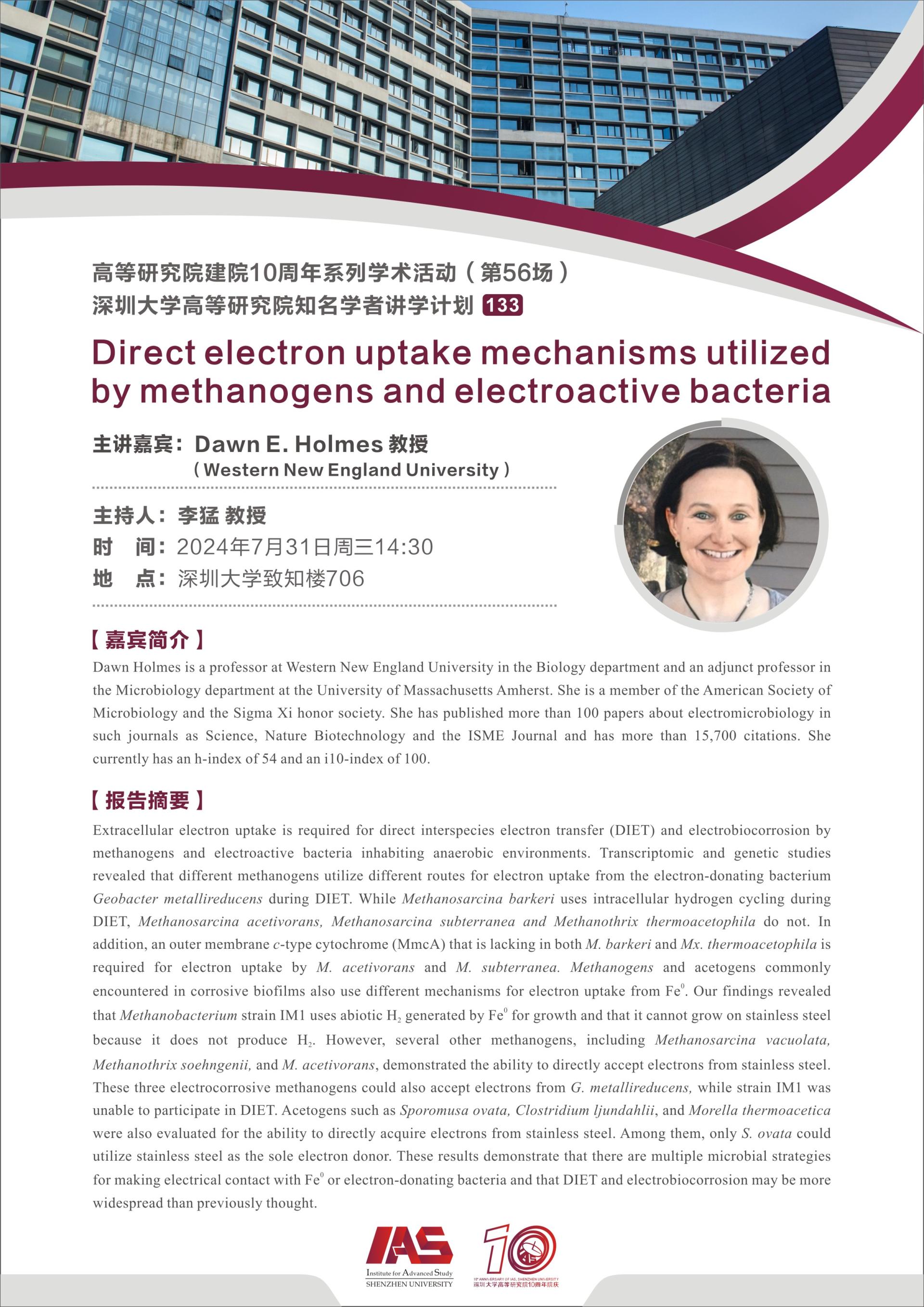报告主题:Direct electron uptake mechanisms utilized by methanogens and electroactive bacteria
主讲人:Dawn E. Holmes教授(Western New England University)
主持人:李猛教授
时 间:2024年7月31日周三14:30
地 点:深圳大学致知楼706
嘉宾简介:
Dawn Holmes is a professor at Western New England University in the Biology department and an adjunct professor in the Microbiology department at the University of Massachusetts Amherst. She is a member of the American Society of Microbiology and the Sigma Xi honor society. She has published more than 100 papers about electromicrobiology in such journals as Science, Nature Biotechnology and the ISME Journal and has more than 15,700 citations. She currently has an h-index of 54 and an i10-index of 100.
报告摘要:
Extracellular electron uptake is required for direct interspecies electron transfer (DIET) and electrobiocorrosion by methanogens and electroactive bacteria inhabiting anaerobic environments. Transcriptomic and genetic studies revealed that different methanogens utilize different routes for electron uptake from the electron-donating bacteriumGeobacter metallireducensduring DIET. WhileMethanosarcinabarkeriuses intracellular hydrogen cycling during DIET,Methanosarcinaacetivorans,Methanosarcina subterraneaandMethanothrix thermoacetophilado not. In addition, an outer membranec-type cytochrome (MmcA) that is lacking in bothM. barkeriandMx. thermoacetophilais required for electron uptake byM. acetivoransandM. subterranea. Methanogens and acetogens commonly encountered in corrosive biofilms also use different mechanisms for electron uptake from Fe0. Our findings revealed thatMethanobacteriumstrain IM1 uses abiotic H2generated by Fe0for growth and that it cannot grow on stainless steel because it does not produce H2. However, several other methanogens, includingMethanosarcina vacuolata,Methanothrix soehngenii, andM. acetivorans, demonstrated the ability to directly accept electrons from stainless steel. These three electrocorrosive methanogens could also accept electrons fromG. metallireducens, while strain IM1 was unable to participate in DIET. Acetogens such asSporomusa ovata,Clostridium ljundahlii, andMorella thermoaceticawere also evaluated for the ability to directly acquire electrons from stainless steel. Among them, onlyS. ovatacould utilize stainless steel as the sole electron donor. These results demonstrate that there are multiple microbial strategies for making electrical contact with Fe0or electron-donating bacteria and that DIET and electrobiocorrosion may be more widespread than previously thought.



